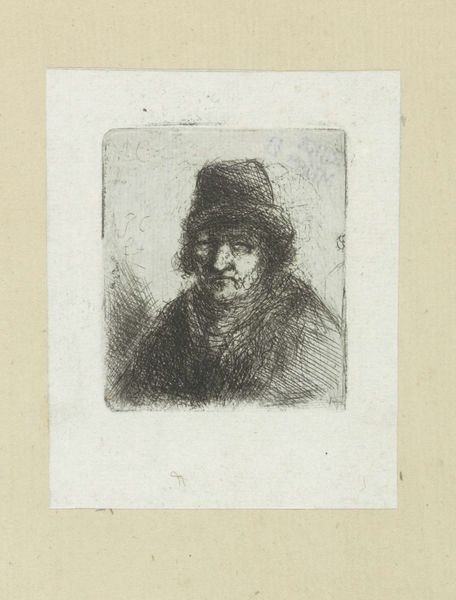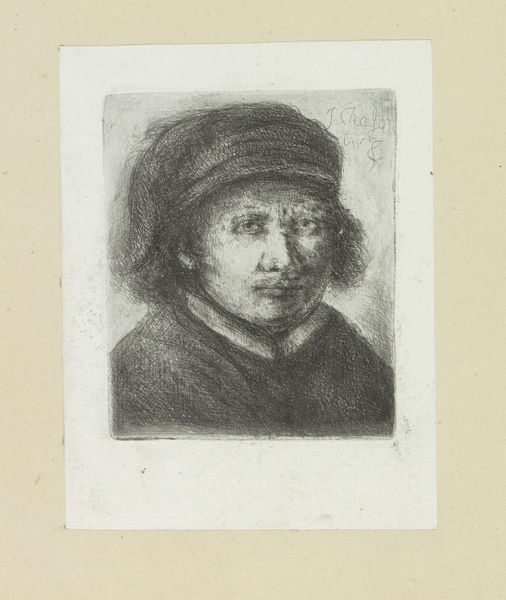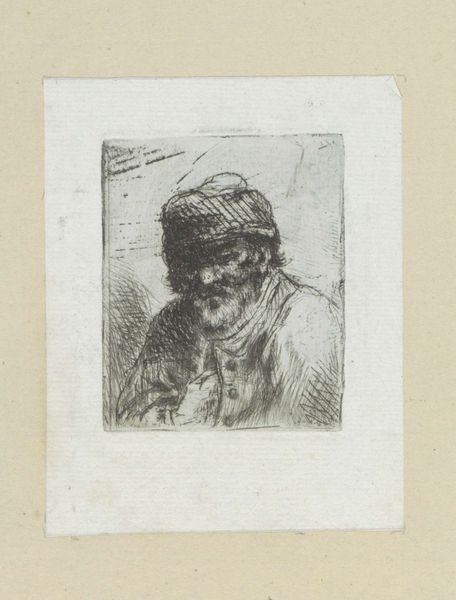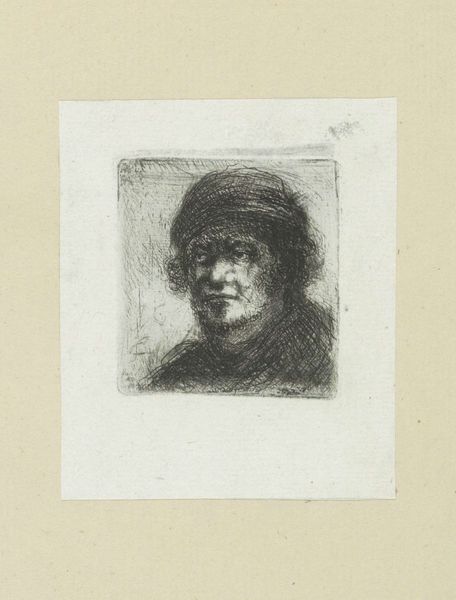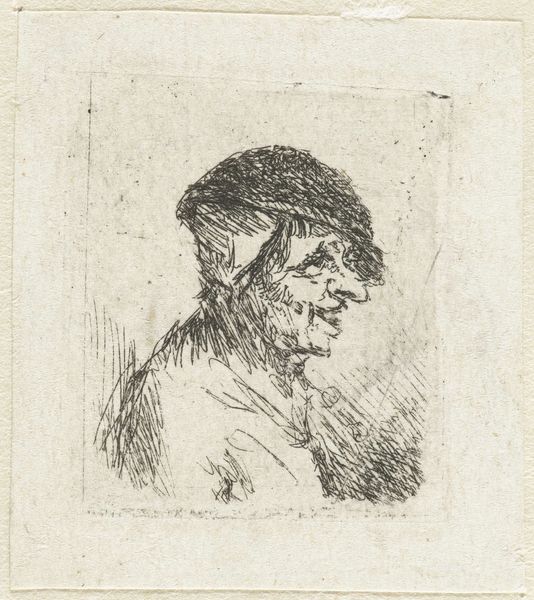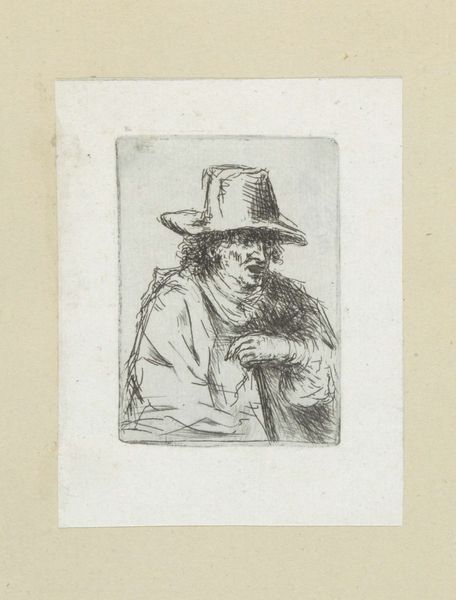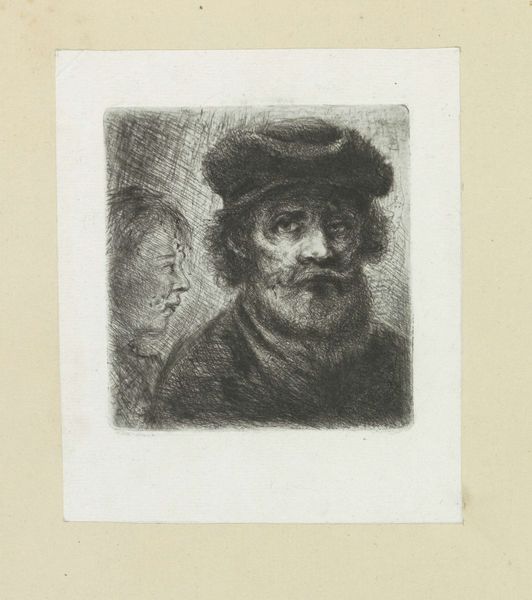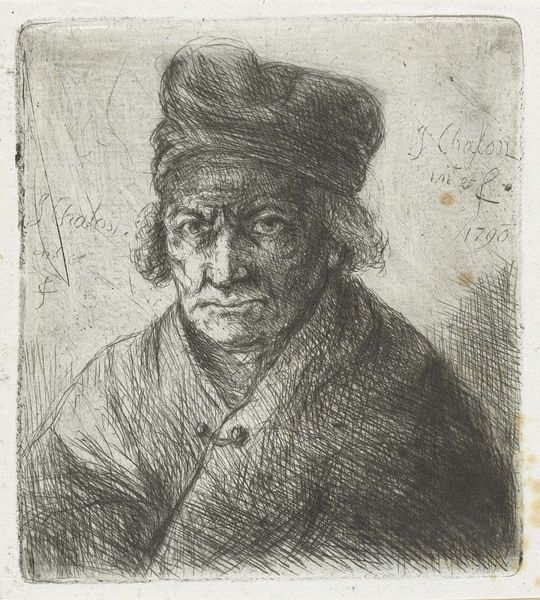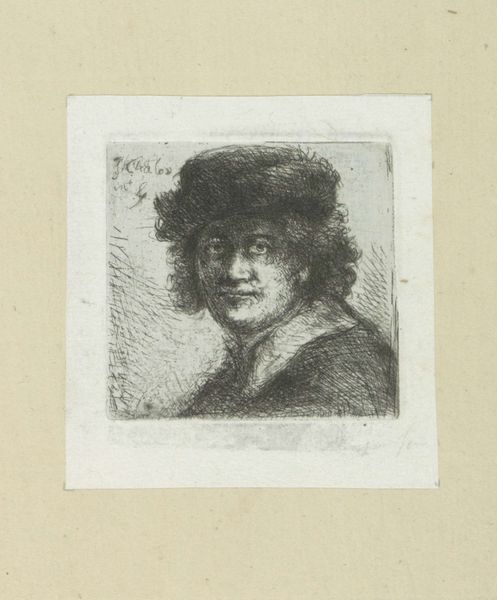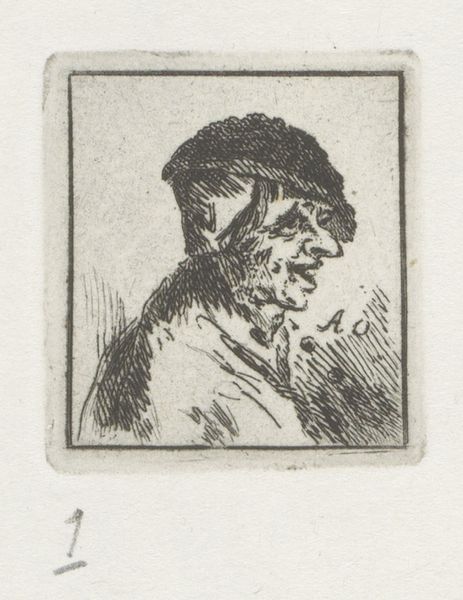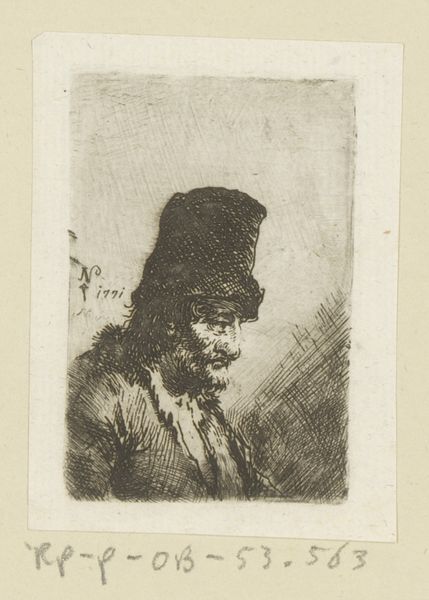
print, etching
#
portrait
# print
#
etching
#
portrait reference
#
portrait drawing
#
tonal art
#
realism
Dimensions: height 98 mm, width 86 mm
Copyright: Rijks Museum: Open Domain
Curator: Looking at Jan Chalon's "Oude man met muts," an etching created between 1790 and 1802, I'm immediately struck by the stark realism of it. The artist truly captured the weariness etched on the old man’s face. Editor: Yes, weariness and maybe even a hint of defiance? There's a certain stoicism in the way he meets the viewer’s gaze, despite the evident signs of aging and hardship. It is difficult not to wonder about the circumstances shaping his existence at that particular historical moment. Curator: Absolutely. Printmaking at the time was experiencing significant growth, largely due to increased demand for accessible art that resonated with the burgeoning middle class. The piece reflects societal interest in realism, showing the less idealized portrait of working people, especially outside court circles. Editor: It also brings up questions around representation, doesn’t it? Who is granted visibility, and on whose terms? While printmaking did democratize access, it’s important to ask what social hierarchies influenced the kind of subjects artists like Chalon chose and how they depicted them. What was Chalon trying to accomplish with his art in the sociopolitical landscape? Curator: His skill in etching really brings out subtle textural qualities, creating depth and a sense of the physical presence of the sitter despite being a relatively small artwork, and that’s why people connected with his portraiture at the time. Editor: I see a connection with artists using their work to document, humanize. How are marginalized groups seen and documented and by whom, because the political dimensions of such decisions dictate whose stories are told. Curator: Indeed. I see Chalon contributing to a wider conversation about societal conditions through portraiture, an artistic trend. Editor: Seeing "Oude man met muts" inspires me to think more deeply about art and representation in relation to identity and power dynamics. Curator: And I see an etching offering a rare insight into art culture and societal interest outside aristocratic circles at the end of the 18th century.
Comments
No comments
Be the first to comment and join the conversation on the ultimate creative platform.
